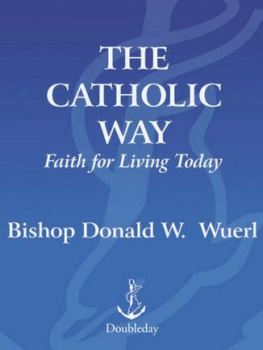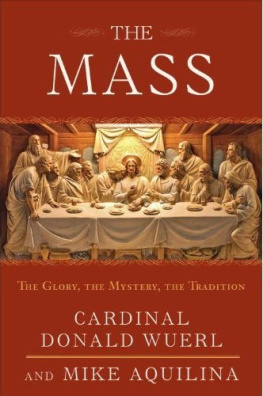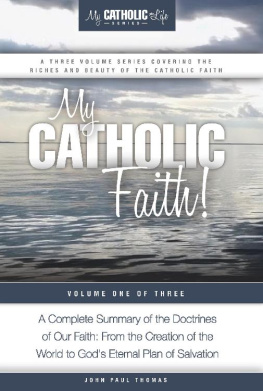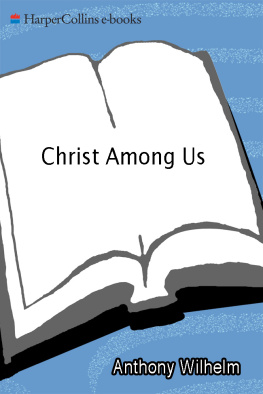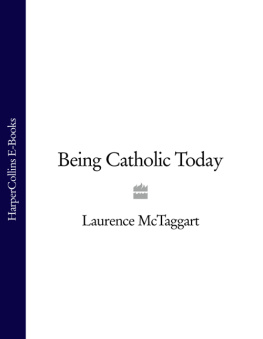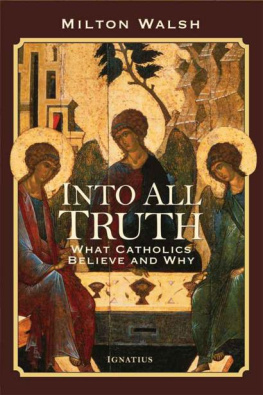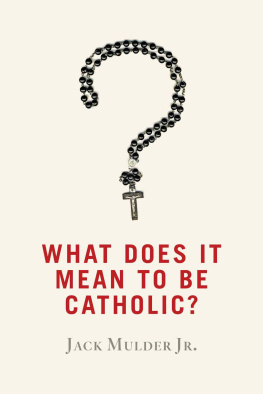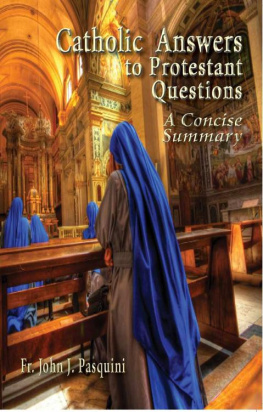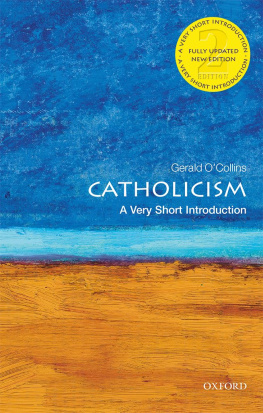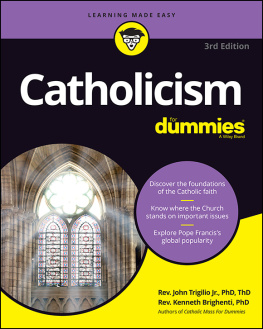
 | THE CATHOLIC WAY Faith for Living Today BISHOP DONAL W. WUERL DOUBLEDAY NEW YORK LONDON TORONTO SYDNEY AUCKLAND |
 | Contents |
 | Preface |
MOST OF THE MATERIAL in this volume is work I was privileged to do over the past seven years as a series of articles for Columbia magazine. Each article dealt with some particular aspect of the Catechism of the Catholic Church. A helpful source is the fourth edition of The Teaching of Christ, edited by Father Ronald Lawler, O.F.M.Cap., Thomas Comerford Lawler, and myself.
Putting together this book, The Catholic Way, has involved editing the Columbia articles and adding new material. But the goal is the same as in those earlier articles: to help unfold the richness of the Catholic faith, found so wonderfully summarized in the Catechism of the Catholic Church.
Part of the challenge is to present in a popular form the teaching contained in what Pope John Paul II called a compendium of all Catholic doctrine regarding both faith and morals. He reminded us that the Catechism of the Catholic Church is not intended to replace all other catechisms; rather, it is meant to encourage and assist in the writing of new local catechisms, which take into account various situations and cultures, while carefully preserving the unity of faith and fidelity to catholic doctrine (Fidei Depositum).
My hope in preparing this book is that, both for myself and for those who read it, faith in Jesus will be renewed and strengthened. As disciples, we would once again stir up that flame of conversion that turns us to Christ and keeps us focused on him as the center of our lives.
Each chapter, while part of a far larger presentation, has the advantage of giving the reader a short sectionbuilt around one issueto read as time allows. It also provides the reader the opportunity to pick a theme or particular subject for review. But this style of presentation necessarily carries with it a certain amount of repetition. All of the Churchs rich teaching on faith and morals cannot be completely separated into neat subjects. Some overlap is helpful and even necessary.
In his apostolic exhortation The Church in America, Pope John Paul II reminded us that all conversion is a turning from what would lead us away from Christ and a turning back to him. The New Testament uses the word metanoia, which means a change in mentality. Today, we would probably be more comfortable speaking of a change in attitude or vision. In either case, the intention is the sameto change our way of thinking and acting so that our lives are centered on Christ.
In providing these reflections, I have found personally that the review of the teaching of the Church, the teaching of Christ, has continuously challenged me to penetrate more deeply the mystery of what it means to be a follower of Jesusa person turned to Christin everything that we say and do.
At the same time, I recognize that not all the readers of this book are necessarily Catholics. One of the marks of this particular moment is the interest in the Catholic Church that many, Christian and non-Christian alike, have shown. If you are one who has come to this volume out of curiosity, I hope you find these reflections helpful. Perhaps you might wish to explore more fully any or all of the areas of the Catholic faith by turning directly to the Catechism itself.
This is the age of the new evangelization. We all know many people who have drifted away from the faith. Our task is to invite them back to the joy and completeness that is union with Christ. The more we know about our faith, the easier it is to share, and the more comfortable we feel about entering into discussion with others.
We are also called to look outward to the wider community and to be a voice of conscience in articulating the word of God and in continuing the ministry of Christ. The need for moral leadership and the obligation to be engaged actively in the formation of public policy are challenges and opportunities for all of us who have been called to be a leaven in society. The more we know of our faith, the more we are likely to cherish and share it. In making these reflections on the Catechism of the Catholic Church, I have been deeply impressed by how committed so many of the faithful are both to learning more about the faith and to living it in a way that realizes all the more Gods kingdom in our lives.
One of the benefits that I found in working on this book was the need to go through every page of the Catechism very carefully. Each time I did, I was impressed once again with the beauty of our faith and its richness. We are truly blessed as members of the Catholic Church to have a compendium of all the Church holds and teaches in matters of faith and moralsand to have it right at our fingertips. Knowing that the Catechism is not a collection of opinions, but an authentic presentation of the faith, makes the use of it all the more satisfying.
A number of people have assisted in the final preparation of this text, and for their work I am most grateful. Michael Aquilina, the editor, has worked diligently to attend to those editorial details that bring continuity and consistency to a series of articles written over many years. I am grateful as well to the Reverend Ronald Lengwin, who has carefully read each of the articles as they were prepared, and who, with Michael Aquilina, has provided the questions at the end of each chapter. A special thank-you to the Reverend Monsignor William Sullivan, who was kind enough to give up the greater part of his vacation to help proofread the text. Finally, I want to recognize the diligence of the Reverend Kris Stubna, who went through the text paragraph by paragraph to assure its conformity with the Catechism of the Catholic Church.
Some of the happiest moments of my life have been associated with teaching the faithwhether in a classroom setting, in an informal gathering, or from the pulpit in the form of a homily. This work found its beginnings in the same spirit. My overriding hope is that, whether I have been successful or not in presenting the content of the Catechism of the Catholic Church, the reader of this book will come away with some idea of the richness of the Catholic faith and a desire to know more about it. If that were true for just one person, then this effort over the past seven years would be well worth it.
 | Papal and Council Documents Cited in This Book |
Ad Tuendam Fidem (To Defend the Faith), Apostolic Letter, Pope John Paul II, 1998
Apostolic Constitution on the Sacrament of Confirmation, Pope Paul VI, 1971
Apostolicam Actuositatem, Decree on the Apostolate of the Laity, Second Vatican Council, 1965
Benedictus Deus, Constitution, Pope Benedict XII, 1336
Christifideles Laici, Apostolic Exhortation, Pope John Paul II, 1988
Credo of the People of God,
Next page
